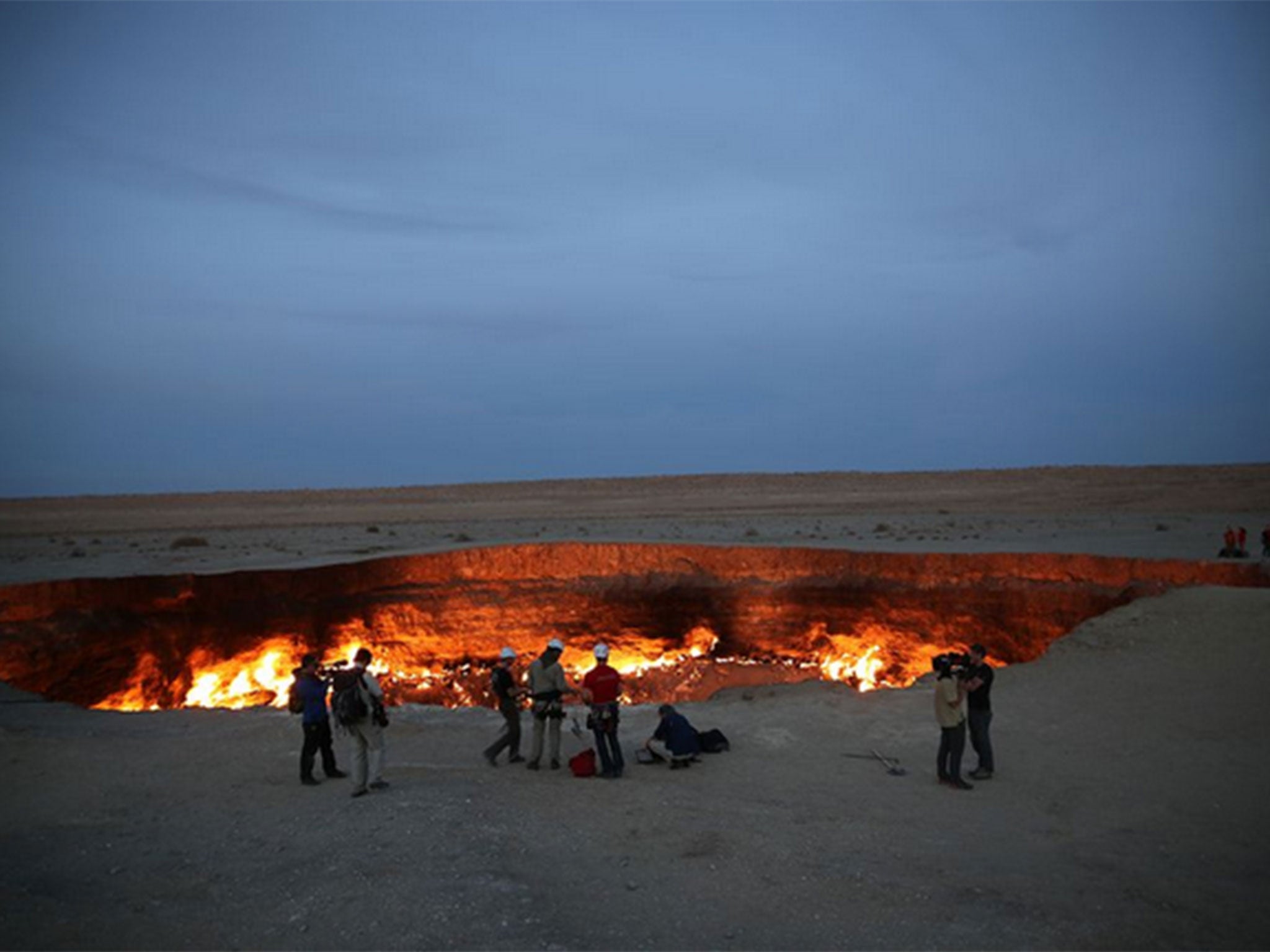'Door to hell': Man dangles himself over molten, gas fuelled crater to find secrets of alien life
Explorer George Kourounis braves the fiery 99 ft deep Darvaza Crater to collect soil

Your support helps us to tell the story
From reproductive rights to climate change to Big Tech, The Independent is on the ground when the story is developing. Whether it's investigating the financials of Elon Musk's pro-Trump PAC or producing our latest documentary, 'The A Word', which shines a light on the American women fighting for reproductive rights, we know how important it is to parse out the facts from the messaging.
At such a critical moment in US history, we need reporters on the ground. Your donation allows us to keep sending journalists to speak to both sides of the story.
The Independent is trusted by Americans across the entire political spectrum. And unlike many other quality news outlets, we choose not to lock Americans out of our reporting and analysis with paywalls. We believe quality journalism should be available to everyone, paid for by those who can afford it.
Your support makes all the difference.George Kourounis is a braver man than most. The scientific explorer, who makes it his business to document some of the most extreme places on the planet, has taken his professional curiosity a step further by entering the planet’s 'Door to hell' in order to salvage some soil.
The expedition site is the giant, methane-burning, Darvaza Crater found in North Turkmenistan, and Mr Kourounis entered it in order to discover whether extreme life forms on other planets can exist.
The crater itself is 225 ft wide and 99 ft deep, and is a fiery molten pit filled with burning methane gas. The pit has existed for more than four decades, and it still remains unclear how it came into being. One rumour is that scientists were looking for natural gas and managed to crack through the crust of the earth, creating a pit that then burst into flames.
Mr Kourounis travelled to the very bottom, held by a series of ropes and encased in a heat-reflective suit, using self-contained breathing apparatus and a custom-made climbing harness that wouldn't melt from the extreme heat.
Once reaching the bottom, Mr Kourounis collected soil samples in the hopes of leaning whether life can survive in such extreme conditions, and whether or not life could survive in similar conditions on other planets.
"When you’re dangling in the middle you just feel like a piece of laundry on the line, drying out," the explorer is heard saying while lowered into the pit. "I was looking around and it looked like a doorway to hell – you realise that if something were to go wrong and fall that you’re dead from a fall," he said.
A documentation of the expedition called Die Trying: Crater of Fire will be broadcast on Sunday on National Geographic Channel.
Join our commenting forum
Join thought-provoking conversations, follow other Independent readers and see their replies
Comments